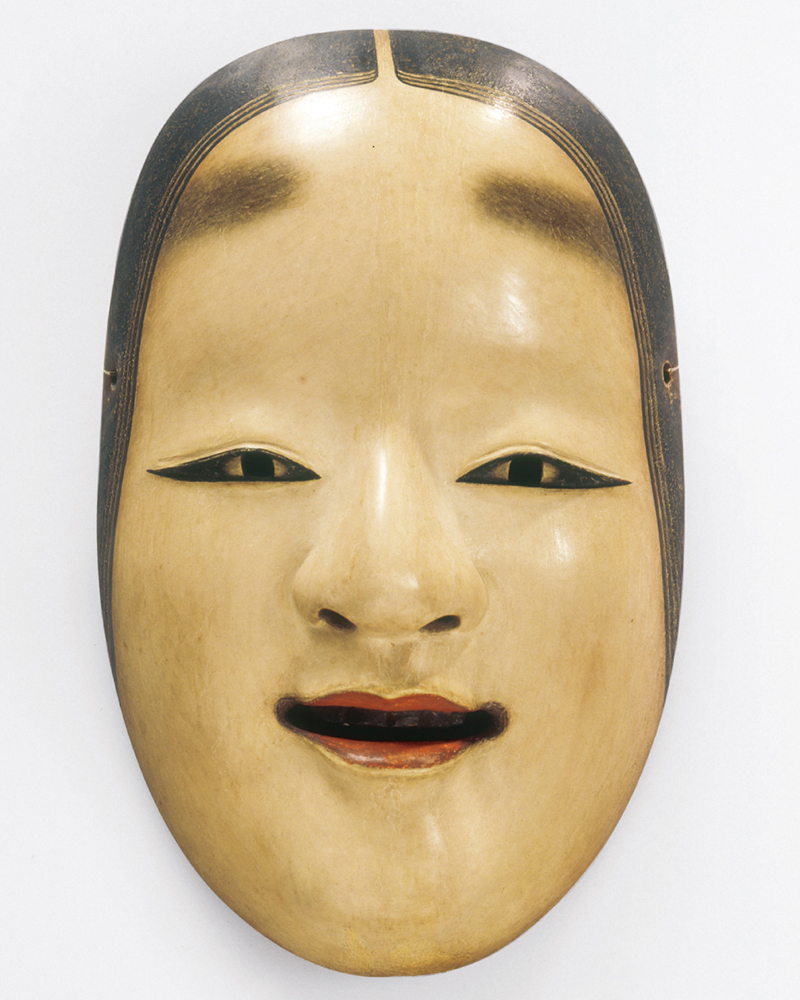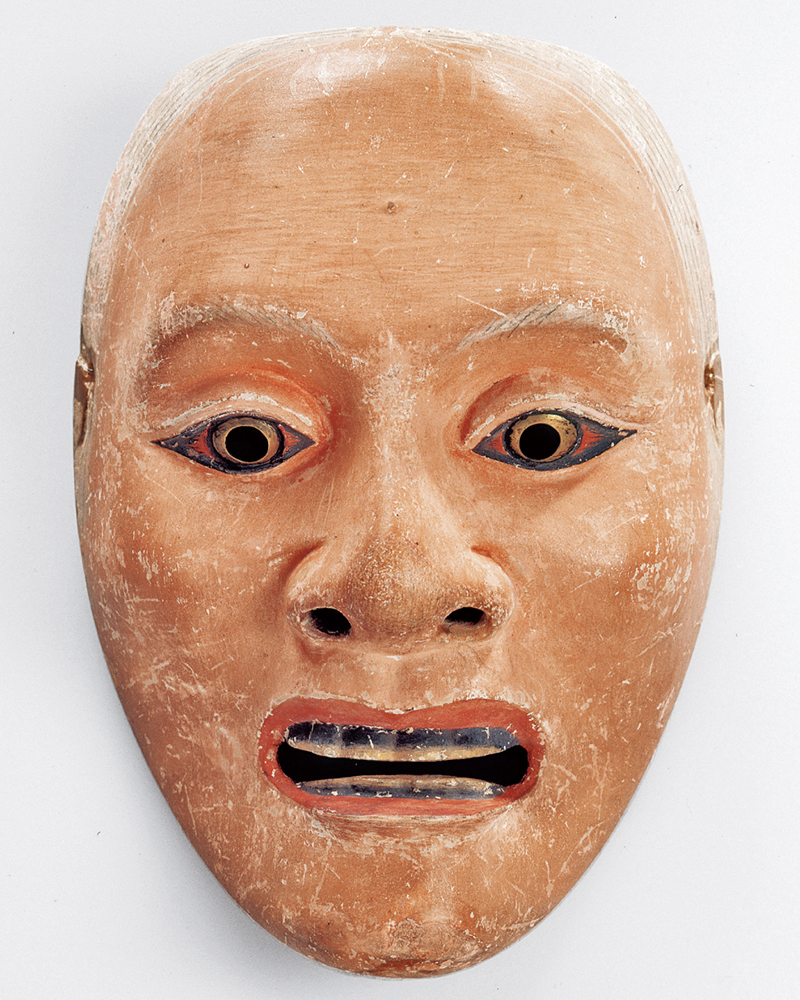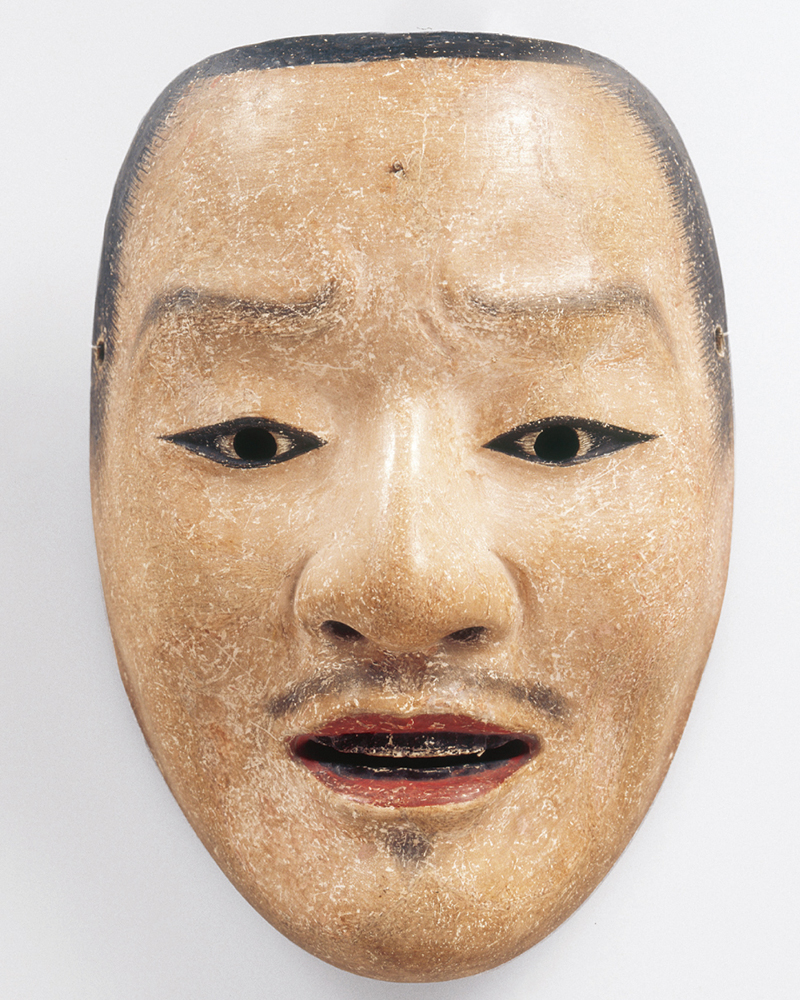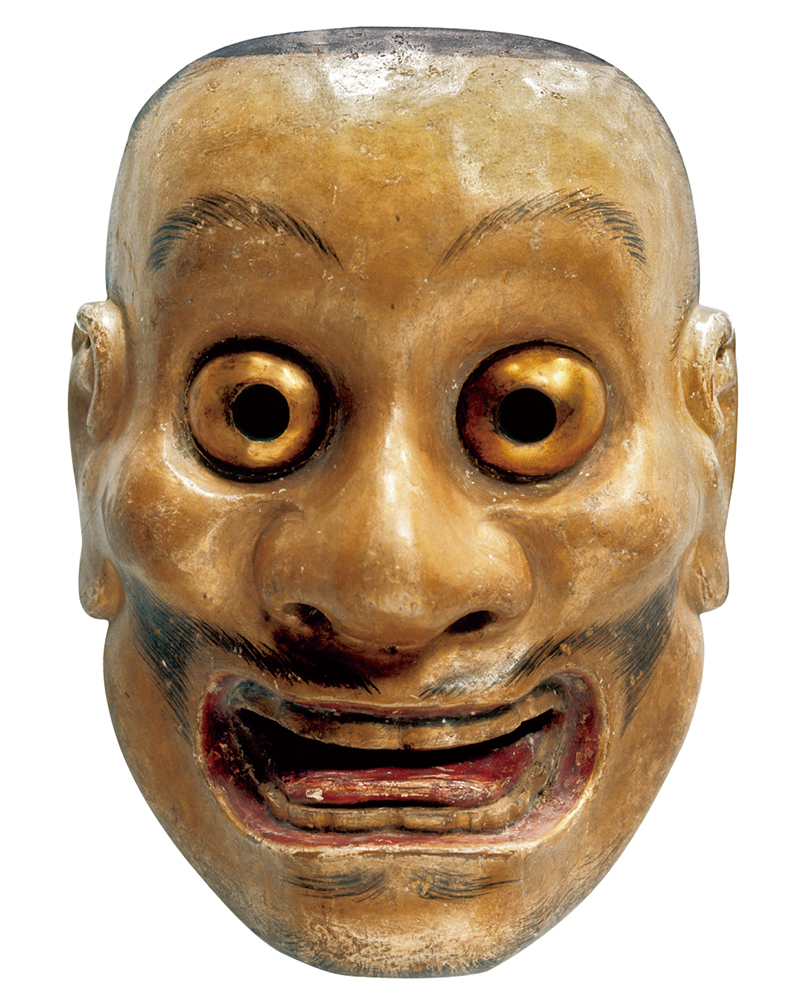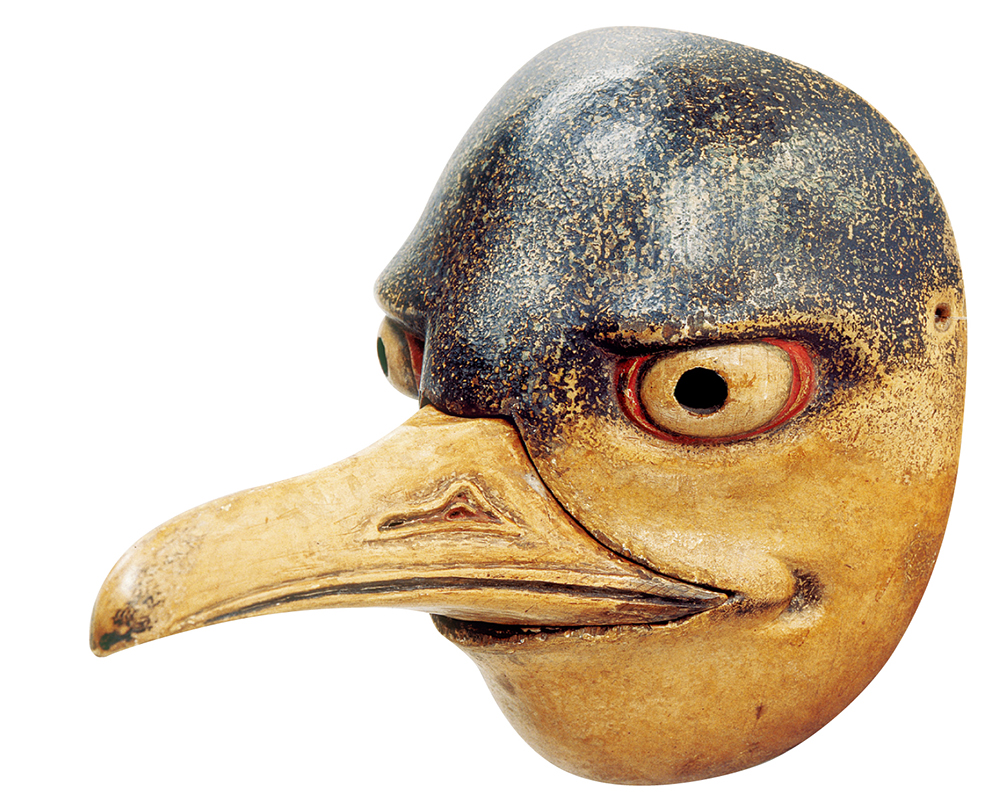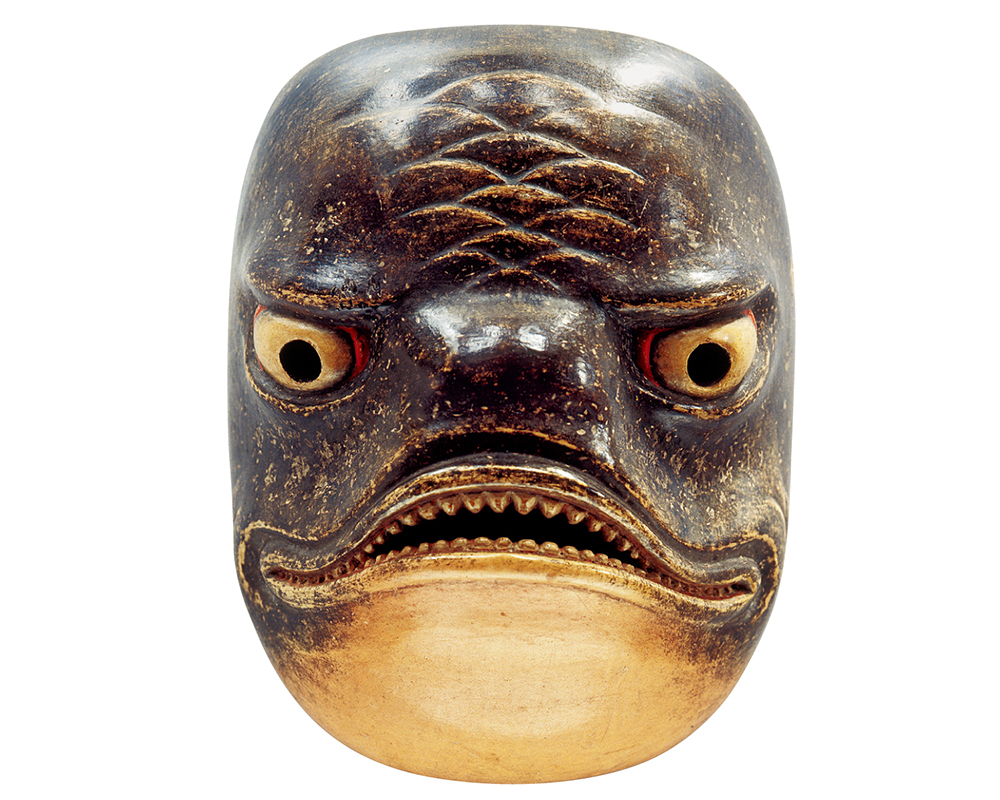Noh masks and Kyogen masks
Noh mask small mask
(Front of the house)
Country
Japan
Era
Edo period (17th century)
Traits
wooden painted
Number of members
1st page
Law
Surface length 21.5 cm Surface width 13.5 cm Surface depth 7.7 cm
Commentary
"Ko" means cute and beautiful, and represents the mask of the youngest woman. The face has plump cheeks and narrow eyes. A rich, sensual fragrance exudes even in the midst of her youthfulness. A poem by Fujiwara Teika from the Shin Kokin Wakashu is embroidered on the mask bag that comes with it, and it is thought to have been used in the play "Teika," which tells the story of the secret love affair between Fujiwara Teika and Princess Shikishi.
Noh Mask Yamanba
(Nome Yamauba)
Country
Japan
Era
Momoyama period (16th century)
Traits
wooden painted
Number of members
1st page
Law
Surface length 20.5 cm Surface width 14.6 cm Surface depth 7.9 cm
Commentary
This mask is used exclusively for the Noh play "Yamauba." In Noh, Yamauba is not depicted as a frightening demon, but as a symbol of Buddhist providence, struggling with the difficulty of overcoming worldly desires and attaining enlightenment. Her hair is a mix of black and white, her features are wild, her skin is smooth and lustrous, and her mouth is wide open. The gilt bronze rings in her eyes represent a being that transcends humans. There is writing engraved on the top right of the forehead on the back of the mask, but it is illegible.
Noh mask Handan man
(Noumen Easy Man)
author
Kawachi Daijo Ieshige
Country
Japan
Era
Edo period (17th century)
Traits
wooden painted
Number of members
1st page
Law
Surface length 20.0 cm Surface width 14.5 cm Surface depth 8.1 cm
Commentary
A special mask for "Handan." The young Chinese man Lu Sheng was troubled by life, but while cooking a bowl of rice he dreamed of experiencing the ups and downs of life, and came to understand its transience. He has a rounded face, with wrinkled brows and a thick beard. As one mask shows the change before and after the dream - a face troubled by reality and a cheerful face after attaining enlightenment - this mask has the most neutral expression of any male mask.
Noh mask big jump
(Noumen Ootobide)
Era
Momoyama period (16th century)
Traits
wooden painted
Number of members
1st page
Law
Surface length 21.2 cm Surface width 15.7 cm Surface depth 8.9 cm
Commentary
According to "Shingaku Dangi" by Zeami (1363-1443), who perfected Noh theater, Ootobidashi is said to be the face of Sugawara no Michizane when he became a vengeful spirit and became angry, spat out a pomegranate from his mouth. It is used as a mask of the god of thunder, the heavenly deity Zao Gongen, and in various scenes, such as when it thunders to signal a good harvest (Kamo) and dances with a celestial maiden to celebrate the coming of the era of Emperor Tenmu (Kunisu). Its face is painted with gold paint, and its wide-open eyes are fitted with gilt bronze rings. Its wide-open mouth and gold paint on its teeth give off an immense divine power.
Kyogen Mask: Cormorant
(Kyougenmen U)
Country
Japan
Era
Edo period (18th century)
Traits
wooden painted
Number of members
1st page
Law
Surface length 18.8 cm Surface width 15.0 cm Surface depth 10.3 cm
Commentary
The cormorant's beak is separate and fastened with a wooden screw. A cormorant spirit appears in the Noh play "Enoshima," and a crucian carp spirit appears in "Shirohige." Both are classified as elegant Noh plays that focus on visual appeal and spectacular onstage productions. They may also have been used in the Sagi school, which died out with the Meiji Restoration. The Sagi school is said to have been founded by Roami in the early Muromachi period, and was employed by the shogunate as a member of the Kanze troupe during the Edo period. Further research is awaited into the relationship between the creation of this work and the Sagi school.
Kyogen Mask: Carp
(Today's carp)
Country
Japan
Era
Edo period (18th century)
Traits
wooden painted
Number of members
1st page
Law
Surface length 19.2 cm Surface width 14.9 cm Surface depth 10.1 cm
Commentary
The statue has a sharp gaze and a fearless look, but its front face is very humorous. It may have been used for the crucian carp spirit that appears in the Noh play "Shirohige." It is also thought to have been used in the Sagi school, which became extinct with the Meiji Restoration, and further research into this relationship is awaited.
